Valve Index VR Headset: 1440×1600 per Eye and 120/144 Hz LCDs
by Anton Shilov on May 2, 2019 9:00 AM EST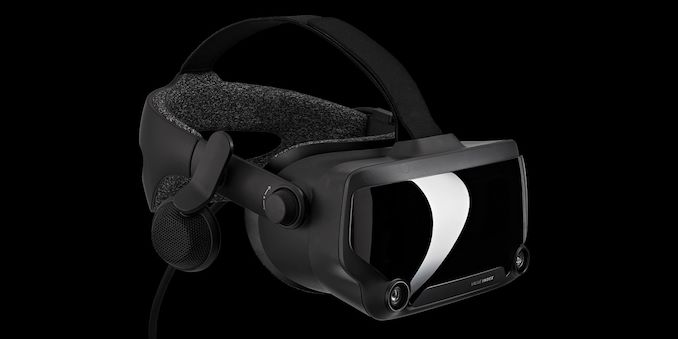
Valve this week started to take pre-orders on its next-generation Index VR headset that was developed entirely in-house. The product significantly improves all the capabilities of the HTC Vive (the first Steam VR headset) when it comes to screen quality, controllers, ergonomics, and tracking (according to the developer).
One of the key part of every VR headset is its display subsystem. The Valve Index is equipped with two LCD screens featuring a 1440×1600 resolution per eye (2880×1600 combined resolution), an up to 120 Hz refresh rate (as well as 144 Hz in overclocked mode), and an expanded field of view of around 130°. The screens are equipped with new optics featuring adjustable dual element canted lenses that ensure optical sharpness across the entire surface and enable users to look around using their eyes, not only the head. The optics also feature interpupillary distance and lens-eye distance adjustments to ensure the maximum viewing comfort.
When it comes to audio subsystem of the Valve Index, it has two nearfield off-ear speakers that feature accurate spatial positioning, yet do not touch ears. This is designed to ensure that users will not get as tired when using the headset and will still hear what is going around them. The headset also features a 3.5-mm headphone jack for those who prefer their own headphones.
Unlike other advanced contemporary VR headsets, the Valve Index continues to use external trackers. The SteamVR Tracking 2.0 system relies on two or four base stations featuring laser tracking that are said to be more reliable, more energy efficient, and cheaper to produce. Valve says that when using four trackers, gamers will be able to enjoy play areas of up to 10×10 meters. It remains to be seen whether such play areas are practical with a tethered headset, however. It is noteworthy that owners of the original HTC Vive will be able to use their base stations with the Index VR headset, but the reverse is not true: the new trackers can only be used with the new Index headset.
In addition to the new tracking system, Valve’s Index VR also comes with all-new controllers. The new controllers can track not only the position in space, but also all five fingers (a consumer industry first), allowing to grab and throw virtual objects. Obviously, to take advantage of the new feature, support from games is required. The Index Controllers also feature a small joystick, a tiny touchpad, two buttons, an analog trigger, a system button, a strap, and a Micro USB port for charging (Ian: a what??). Valve believes that its controller can live for about seven hours on one charge, but everything naturally depends on the actual use.
Last but not least, Valve says that its new head strap that features a rear strap knob, a top strap adjustment, as well as an overall better ergonomics than competing HMDs.
Valve’s Index VR headset uses a DisplayPort 1.2 and a USB port to connect to PC. When USB 3.0 connection is used, it will be possible to access camera’s pass-through mode for AR applications. Meanwhile, the HMD also has a VirtualLink interface support that can handle both display and USB data through a single USB Type-C cable.
Valve is taking pre-orders on its Index VR headset now with plans to ship the units in June. The whole package containing the HMD, controllers, and base stations costs $999. Alternatively, it is possible to get the HMD with controllers for $749, only the headset for $499, only the controllers for $279, and a pair of base stations for $299.


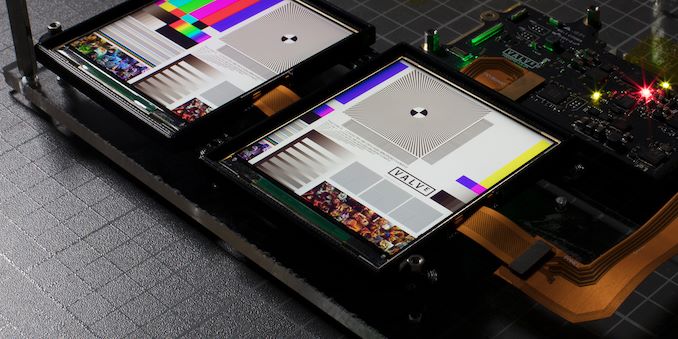
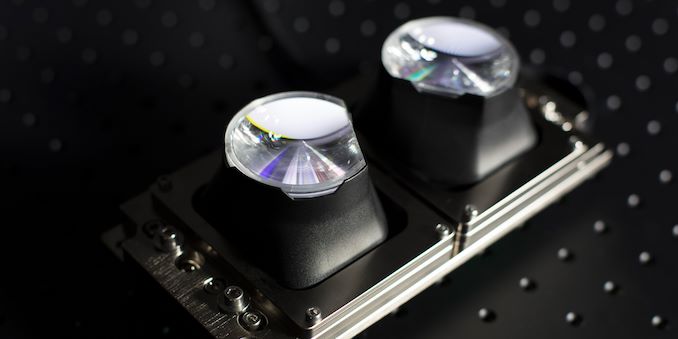
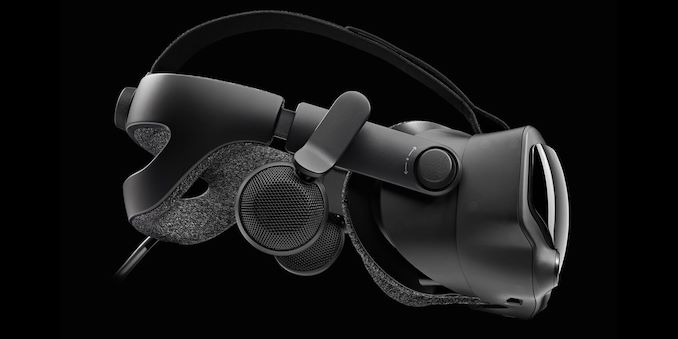
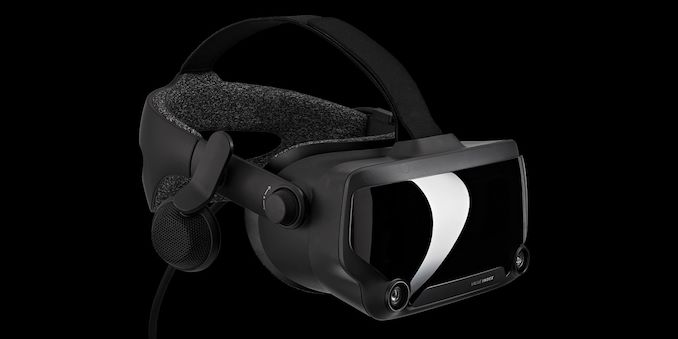
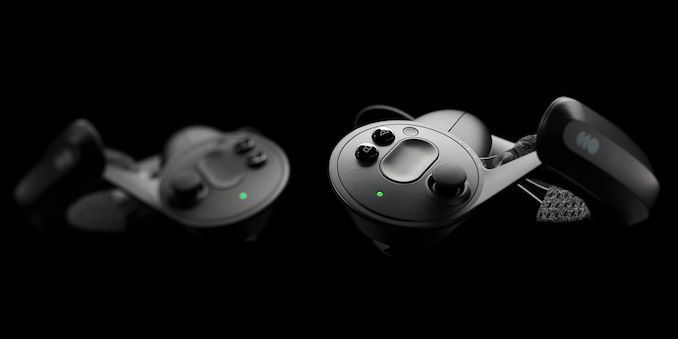
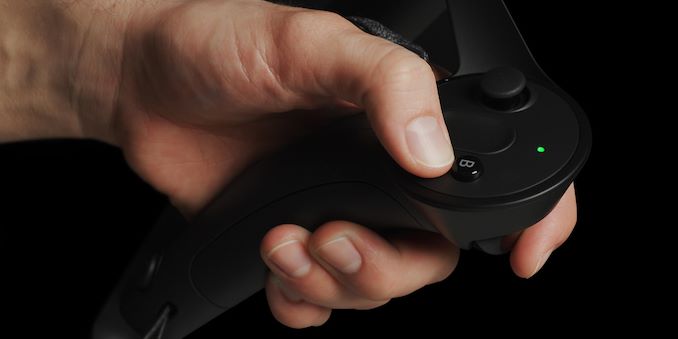
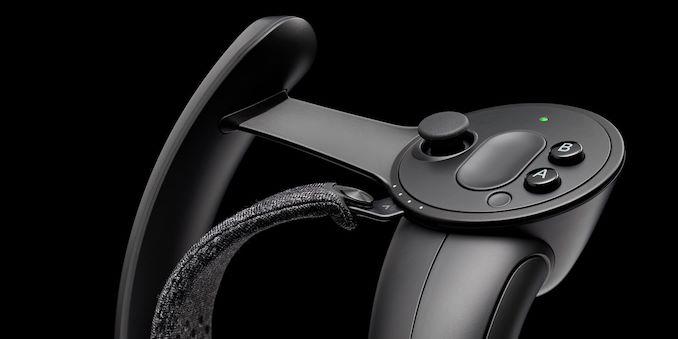








55 Comments
View All Comments
Death666Angel - Friday, May 3, 2019 - link
"Human vision is dramatically more vertical than the movie industry has standardized on." Not sure why you bring in the movie industry. This concerns biology more than movies. And biology shows that we move our eyes and head more left to right than up and down.mode_13h - Saturday, May 4, 2019 - link
> biology shows that we move our eyes and head more left to right than up and down.Biology shows this? Or just some researchers who studied how modern humans in developed countries move their eyes?
Opencg - Thursday, May 2, 2019 - link
as well horizontal resolution is important for depth perceptioneastcoast_pete - Thursday, May 2, 2019 - link
Is this set usable by people who have to wear glasses? I don't see any mention of it here. I also like to know if and how well this is ventilated. Some of these VR goggles can get quite hot and uncomfortable.evilspoons - Thursday, May 2, 2019 - link
Yes, they reviewed it on Tested and Norm was saying it fit fine over his glasses.29a - Friday, May 3, 2019 - link
Norm is an idiot.bloodgain - Thursday, May 2, 2019 - link
I like that it uses DisplayPort or VirtualLink instead of HDMI, and the controllers look like the best in the industry right now. Tracking towers are still a non-starter for me, though. I get that they are more accurate overall and better for room-scale, but I don't have a dedicated room for VR. For me, it's sitting or standing with only a little side-to-side movement (VR racing is great!). I hope we'll see similar finger-tracking controllers with inside-out tracking soon.Also, I think you meant to say "interpupillary distance". "Interpapillary" would be a whole other thing entirely, and kind of weird.
PseudoKnight - Thursday, May 2, 2019 - link
I think if you can't do room scale, this might not be the optimal choice anyway. Valve has always seemed pretty focused on room scale.stephenbrooks - Monday, May 6, 2019 - link
I ended up 3D printing wall mounts for the HTC Vive trackers that hang from a picture hook on a single small nail. The built-in solution required six large screws in my wall and floor-standing towers are equally obtrusive. Not sure why the product designers over-engineered this one because the hook solution is no more difficult than putting a couple of small pictures on your wall...isthisavailable - Thursday, May 2, 2019 - link
So 802.11ad wifi turned out to be useless?